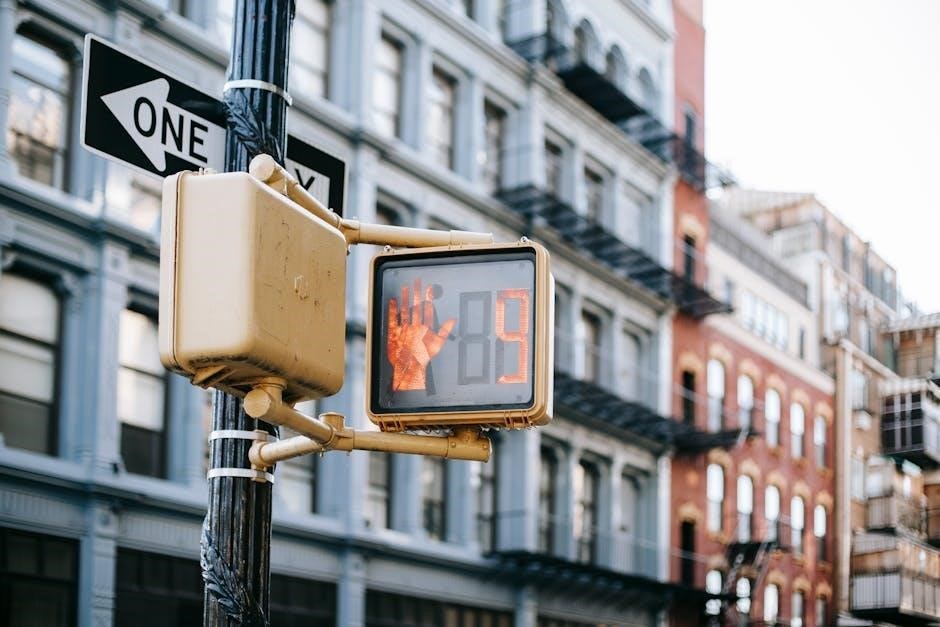
Discover the essential guide to shoelace size, ensuring a perfect fit, comfort, and style. Learn how to choose the right length for your shoes, from casual to athletic, with expert tips and charts.
Understanding the Importance of Proper Shoelace Size
Proper shoelace size plays a crucial role in ensuring comfort, support, and optimal performance. Ill-fitting laces can lead to discomfort, poor shoe fit, and even safety issues, especially during physical activities. Shoelaces that are too long may unravel easily, while those that are too short can make tightening difficult, leading to a loose fit. The right length ensures secure lacing, preventing blisters and providing consistent support. Additionally, proper sizing enhances the durability of both the laces and the shoe, as excessive strain on eyelets or uneven wear can be avoided. Whether for athletic shoes, hiking boots, or casual footwear, understanding the importance of correct shoelace size is essential for maximizing comfort and functionality.
Key Factors to Consider When Choosing Shoelace Length
When selecting the appropriate shoelace length, several factors must be considered to ensure the best fit and functionality. First, the number of eyelets on the shoe is crucial, as more eyelets typically require longer laces. Shoe size also plays a role, with larger sizes often needing longer laces due to greater distance between eyelets. The lacing style is another important factor, as methods like crisscross lacing may require more length than straight lacing. Additionally, the type of shoe influences lace length, with athletic or hiking shoes often needing longer, more durable laces. Finally, personal preference and lace material can affect the ideal length, as thicker laces may need to be slightly longer for ease of use. Balancing these factors ensures optimal comfort, support, and performance.

How to Determine Shoelace Size
To determine the right shoelace size, measure the laces from tip to tip while they are laced in the shoe. Use a shoelace size chart for accuracy, or count the number of eyelets to estimate the required length.
Step-by-Step Guide to Measuring Shoelace Length

Measuring shoelace length accurately ensures a proper fit and optimal performance. Start by removing the laces from your shoes and stretching them out to their full length. Use a ruler or measuring tape to record the length from tip to tip. Next, count the number of eyelets on your shoe, as this helps estimate the required length. For most shoes, the formula is: number of eyelets multiplied by 1.5 inches. For example, 8 eyelets would require an 12-inch lace. Refer to a shoelace size chart to confirm the measurement, as charts often provide standardized lengths based on shoe type and eyelet count. If unsure, consider the lacing style, as crisscross or zigzag patterns may require slightly longer laces. Always double-check your measurements to ensure comfort and functionality. Accurate measurement ensures your shoes stay secure and look their best.
Using a Shoelace Size Chart for Accuracy
A shoelace size chart is a valuable tool for determining the perfect lace length for your footwear. These charts are typically standardized and based on shoe type, eyelet count, and lacing style. Start by identifying your shoe category—casual, athletic, or hiking—and locate the corresponding size range. Most charts list lengths in inches or centimeters, making it easy to match your needs. For example, a shoe with 8 eyelets usually requires a 120-140 cm lace. If you prefer a specific lacing style, such as crisscross or zigzag, adjust the length accordingly. Some charts also account for material thickness, ensuring optimal comfort and durability. By referencing a reliable shoelace size chart, you can eliminate guesswork and ensure a secure, comfortable fit tailored to your footwear. This method is especially helpful for those unsure of how to measure or calculate lace length manually. Always double-check the chart for accuracy before making a purchase.

Factors Influencing Shoelace Length
The number of eyelets, shoe size, and lacing style significantly impact shoelace length. More eyelets require longer laces, while larger shoe sizes and complex lacing patterns also demand additional length for a secure fit.
Number of Eyelets and Their Impact on Lacing
The number of eyelets on a shoe directly influences the required shoelace length. Shoes with more eyelets need longer laces to accommodate the additional lacing holes, ensuring a secure and comfortable fit. For example, a shoe with 8-10 eyelets typically requires a shoelace length of 45-60 inches, while shoes with fewer eyelets, like 4-5, may only need 30-45 inches. The spacing between eyelets also plays a role, as closer eyelets require less lace length compared to those spaced farther apart. Additionally, the lacing style can amplify the impact of eyelet count, with crisscross lacing generally needing more length than straight lacing. To determine the ideal length, count the eyelets on one side of the shoe and double it to account for both sides, then add a few inches for tying. This ensures the laces are long enough to pass through all eyelets comfortably without being excessively long.
Shoe Size and Its Relation to Shoelace Length
Your shoe size plays a significant role in determining the ideal shoelace length. Generally, larger shoe sizes require longer laces due to the increased distance between eyelets and the overall size of the shoe. For instance, a men’s size 8 shoe typically needs a longer lace than a size 6. However, this relationship isn’t always linear, as shoe width and lacing style can also influence the required length. Athletic or hiking shoes, which often have more eyelets, may need longer laces even for the same shoe size. To ensure accuracy, measure the laces of a well-fitting pair or consult a shoelace size chart that correlates shoe size with recommended lace lengths. This approach helps maintain comfort and a secure fit, whether for casual wear or high-performance activities.
Lacing Style: How It Affects Shoelace Size
The lacing style you use significantly impacts the required shoelace length. For example, a crisscross lacing pattern typically requires more lace than a straight lacing method, as it involves more intersections and wraps around the shoe. Similarly, styles like the “bunny ears” method or the “loop, scoop, and pull” technique may demand slightly longer laces to ensure a secure fit; Certain styles, such as those used for hiking boots or athletic shoes, often involve additional eyelets or tighter lacing, which can increase the need for longer laces. On the other hand, minimalist or slip-on styles may require shorter laces. To determine the ideal length, consider how tightly you prefer your shoes to be laced and the number of eyelets your shoes have. Consulting a shoelace size chart tailored to your lacing style can help you find the perfect fit. Always measure or reference a guide to avoid overly long or short laces.

Shoelace Types and Their Sizes
Explore various shoelace types, including nylon, cotton, and polyester, each offering unique durability and style. Specialized laces for athletic or hiking shoes are designed for enhanced performance and longevity, ensuring a secure fit.
Different Materials and Their Durability
When selecting shoelaces, the material plays a crucial role in determining durability and comfort. Nylon laces are highly durable, moisture-resistant, and ideal for athletic shoes. Cotton laces offer a soft, classic feel but may wear out faster. Polyester laces strike a balance between strength and flexibility, making them a popular choice. For premium options, wax-coated laces provide extra resistance to fraying and water. Elastic laces are great for convenience, while metal-tipped laces add a touch of style and longevity. Each material caters to specific needs, ensuring optimal performance for different shoe types and activities. By choosing the right material, you can enhance both the lifespan and functionality of your shoelaces, ensuring a secure and comfortable fit every time.
Specialized Shoelaces for Athletic or Hiking Shoes

For athletic or hiking shoes, specialized shoelaces are designed to meet the demands of intense activity and rugged terrain. High-performance laces often feature reinforced materials like heavy-duty nylon or polyester, offering superior durability and resistance to wear. Many are equipped with weather-resistant coatings to withstand moisture and abrasion. Elastic laces are a popular choice for runners, providing a snug, adaptable fit that minimizes adjustments during workouts. For hiking, extra-long laces with secure locking tips are ideal for boots with multiple eyelets; Some laces also include anti-slip coatings to prevent unraveling, ensuring a stable fit on trails or tracks. Whether you’re tackling a marathon or a mountain trail, these specialized laces are engineered to enhance performance, comfort, and support, making them an essential upgrade for your footwear.

How to Care for Your Shoelaces

Keep your shoelaces clean by hand washing with mild soap and water. Avoid machine drying to prevent damage. Store them neatly to maintain shape and longevity for optimal performance.
Tips for Cleaning and Maintaining Shoelaces
Properly caring for your shoelaces ensures durability and longevity. Start by removing dirt and stains with a soft brush or cloth. For tougher stains, mix mild soap with warm water, and gently scrub the laces. Avoid using harsh chemicals or bleach, as they can damage materials. Rinse thoroughly and air dry to prevent shrinkage or discoloration. For fabric laces, consider hand washing them separately to avoid fraying. Regular cleaning prevents odor buildup and maintains a fresh look. Store your laces in a cool, dry place when not in use to prevent tangling or damage. By following these simple steps, you can keep your shoelaces in great condition and extend their lifespan.
Best Practices for Storing Shoelaces
Properly storing your shoelaces ensures they remain tidy, organized, and ready for use. Start by keeping them clean and dry before storage to prevent dirt buildup. Use small, labeled containers or envelopes to store laces, separating them by type or length to avoid confusion. Rolling or folding the laces neatly can help prevent tangling. For extra organization, consider using a storage box with compartments or a small drawer dedicated to accessories. If you have multiple pairs, label each container with the shoe type or lace length for easy identification. Avoid leaving laces loose in a drawer, as they may tangle or get lost. Store them in a cool, dry place to protect them from moisture and wear. By following these steps, you can maintain your shoelaces in excellent condition and ensure they remain functional for years to come.

Troubleshooting Common Shoelace Issues
If your shoelaces are too long, trim them to the ideal length or replace them. For short laces, try a longer pair or adjust your lacing style for better comfort and security.
What to Do If Your Shoelaces Are Too Long
If your shoelaces are too long, there are several practical solutions to address the issue. First, consider trimming the excess length using scissors or a lace trimmer for a clean finish. Ensure the remaining length is sufficient for comfortable tying. Alternatively, you can replace the laces with a shorter pair that matches your shoe size and style. To avoid frequent adjustments, refer to a shoelace size chart for accurate measurements. If you prefer keeping the longer laces, try tucking the extra length into your shoe or using lace locks to secure them neatly. Properly fitted laces enhance comfort and prevent tripping hazards. For active individuals, consider specialized laces designed for specific activities, such as hiking or sports, which offer durability and optimal performance. Always prioritize functionality and safety when resolving shoelace length issues.
How to Fix Shoelaces That Are Too Short
If your shoelaces are too short, there are effective ways to resolve the issue. The most straightforward solution is to replace them with longer laces that match your shoe size and style. Before purchasing, measure the length of your current laces or refer to a shoelace size chart for accurate sizing. If replacing isn’t an option, consider using lace extenders or lace locks to add extra length temporarily. Additionally, adjusting your lacing technique can help maximize the usable length of the laces. For example, using a crisscross or zigzag pattern may provide a more secure fit. For athletic or hiking shoes, specialized shoelaces with elastic properties can offer better flexibility and comfort. Always prioritize functionality and safety to ensure your shoes stay securely fastened during activities. Properly fitted laces are essential for both performance and comfort.

Frequently Asked Questions
Common questions include how to determine shoelace size without measuring, if shoelace size differs for men and women, and why shoelaces wear out quickly. These FAQs provide practical solutions and insights.
How to Determine Shoelace Size Without Measuring
If you don’t have a ruler, you can still estimate shoelace size effectively. Start by considering your shoe size and the number of eyelets. Generally, larger shoes require longer laces. For example, a size 8 shoe typically needs a 45-inch lace, while a size 12 might require 60 inches or more. Another method is to refer to a shoelace size chart, which correlates shoe size with lace length. You can also use the lacing style as a guide—crisscross lacing usually needs shorter laces, while straight lacing may require longer ones. If unsure, opt for a standard length based on your shoe type (e.g., 45 inches for sneakers or 60 inches for boots). This approach ensures a good fit without precise measurements.
Can Shoelace Size Differ for Men and Women?
While shoelace size primarily depends on shoe size and style, there can be differences between men’s and women’s laces due to footwear design. Men’s shoes often have more eyelets, especially in boots, requiring slightly longer laces. Women’s shoes, particularly those with decorative or intricate lacing, might use shorter or thinner laces. However, the shoelace size is more about the shoe than the gender. For instance, a women’s size 8 and a men’s size 6.5 are similar in length, so their lace needs are comparable. Ultimately, the key factors are the shoe’s eyelet count and lacing style, not the gender. This ensures that the shoelace size remains consistent across similar shoe sizes, regardless of who wears them.
Why Do Shoelaces Wear Out Quickly?
Shoelaces often wear out quickly due to factors like friction, frequent use, and exposure to environmental elements. The materials used in their construction play a significant role; cheaper materials may degrade faster than premium options. Lacing style also impacts durability, as tight lacing or complex patterns can cause excessive strain. Additionally, moisture and dirt can weaken the fibers over time. For athletic or hiking shoes, constant tension and rough terrain accelerate wear. Even high-quality laces can fray or break if not properly maintained. Regular cleaning and avoiding excessive tightness can help extend their lifespan. Understanding these factors can guide you in choosing more durable options or adopting better care practices to prevent premature wear.
Selecting the right shoelace size ensures comfort, durability, and style. By considering factors like shoe type, lacing style, and material, you can choose laces that meet your needs perfectly.
Final Tips for Choosing the Perfect Shoelace Size
Choosing the right shoelace size is crucial for comfort, durability, and style. Always measure your shoes’ eyelets and consider your lacing style to determine the ideal length. If unsure, consult a shoelace size chart or measure your current laces from tip to tip. Optical lacing reduces wear, while crisscross lacing offers a snug fit. For athletic shoes, opt for durable materials like nylon or polyester. Store laces in a dry place to prevent fraying. If replacing laces, match the width to your shoe’s eyelets for a proper fit. Experiment with different styles to find what works best for you. Remember, the right shoelace size enhances both performance and aesthetics, ensuring your shoes stay secure and look great. By following these tips, you’ll never go wrong in selecting the perfect laces for your footwear.

